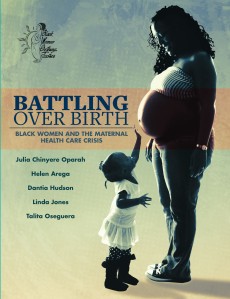Katharine Graves shares simple but important tips for getting into good positions for giving birth.
Squatting is a very good position for giving birth, but in our society we are not used to squatting so it seems unnatural. Many women adopt a position to give birth that has a similar effect to squatting, which is kneeling with legs apart and leaning forwards, perhaps on the side of a birthing pool.
There is a great deal of talk about the best position for giving birth, and there are books with many very complicated pictures. But consider, if you were going for a walk in the country and wanted to open your bowels, you would retire behind a tree, and you wouldn’t stand there considering what position to take, you would just squat, because it’s the natural way to expel anything from your body. It is extremely unlikely you would lie flat on your back. It’s exactly the same having a baby: your body knows what to do. But if it’s your first baby, your brain doesn’t yet know that your body can do it perfectly well. In the event, you will simply go into whatever position is comfortable for you and will help your baby most. Yet even in this age of natural birth, many women still give birth flat on their back or semi-recumbent.
As you squat down you can almost feel your hips easing outwards, and the capacity of your pelvis can be up to 30 per cent greater compared with lying on your back (according to X-ray studies on ‘primitive’ upright delivery positions by J.G.B. Russell in the 1980s).
Following a trend
It is said that women only began to give birth lying on their backs in the time of Louis XIV, because the king expressed a wish to see a baby being born when his mistress was giving birth. At that time women in labour would often sit on stools, such as milking stools, and the midwife would receive the baby at floor level; but kings don’t grovel on the floor, so it all had to be frightfully proper and his mistress lay in bed. Women of the court copied this, and midwives began to find they had more difficulty getting babies out when the mothers lay flat, so they called in the doctors more often. Then everyone started giving birth lying down, believing that if it was done in the royal household, it must be best — but nobody quite thought about what was actually best for the mother and the baby.
How gravity helps
Squatting, or a similar position, is one of the best and most natural positions for childbirth. You have gravity on your side and you have the maximum pelvic capacity. It shortens the length of the birth canal and helps your baby to move more quickly and easily into the world. It also tilts the uterus and pelvis forward, placing the baby in the proper alignment for birth, and opens the pelvic floor muscles.

If you give birth lying flat or nearly flat, not only do you not have gravity on your side but, because of the curl of the coccyx, you are actually pushing upwards, which is pushing against gravity. As the baby moves down towards birth, the coccyx naturally flexes and moves out of the way. But if you are lying flat on your back it can’t do that, because your weight and the bed are preventing it, and therefore you are making the space your baby has to come through smaller.
A mother is often most comfortable giving birth in an upright position, probably leaning slightly forwards, squatting, kneeling, leaning on the kitchen work surface, or standing up with her arms around her husband’s or partner’s neck — so that the weight of the baby in no way inhibits her blood flow or her nervous system. But always consider your individual circumstances — there is no ‘one size fits all’. If, for instance, a woman has pelvic girdle pain in pregnancy, squatting may not be appropriate for her, and it might be wise to seek medical advice and consider getting any lumbar or sacral misalignments corrected by a craniosacral therapist or a chiropracter before giving birth.
 Excerpted with permission from The Hypnobirthing Book: An inspirational guide for calm, confident, natural birth.
Excerpted with permission from The Hypnobirthing Book: An inspirational guide for calm, confident, natural birth.
Reference
Russell, J. G. B. (1982). The rationale of primitive delivery positions. BJOG: An International Journal of Obstetrics and Gynaecology, 89(9), 712–715. doi:10.1111/j.1471-0528.1982.tb05096.x
 Katharine Graves is the founder of KGHypnobirthing and its leading hypnobirthing teacher. Katharine is a member of the International Advisory Board of the HypnoFertility Foundation of America, the Maternity and Newborn Forum of the Royal Society of Medicine, the Association for the Improvement of Maternity Services (AIMS), and is an associate member of the Royal College of Midwives. She trained as a doula with internationally renowned obstetrician Michel Odent.
Katharine Graves is the founder of KGHypnobirthing and its leading hypnobirthing teacher. Katharine is a member of the International Advisory Board of the HypnoFertility Foundation of America, the Maternity and Newborn Forum of the Royal Society of Medicine, the Association for the Improvement of Maternity Services (AIMS), and is an associate member of the Royal College of Midwives. She trained as a doula with internationally renowned obstetrician Michel Odent.























May 18, 2018 at 10:42 am
Great insights, thanks for posting. I’ve switched to a healthier life lately and now training for a race with half marathon app and also on a strict diet. Things are going great for now. Maybe I’ll even become a mother soon.
LikeLike